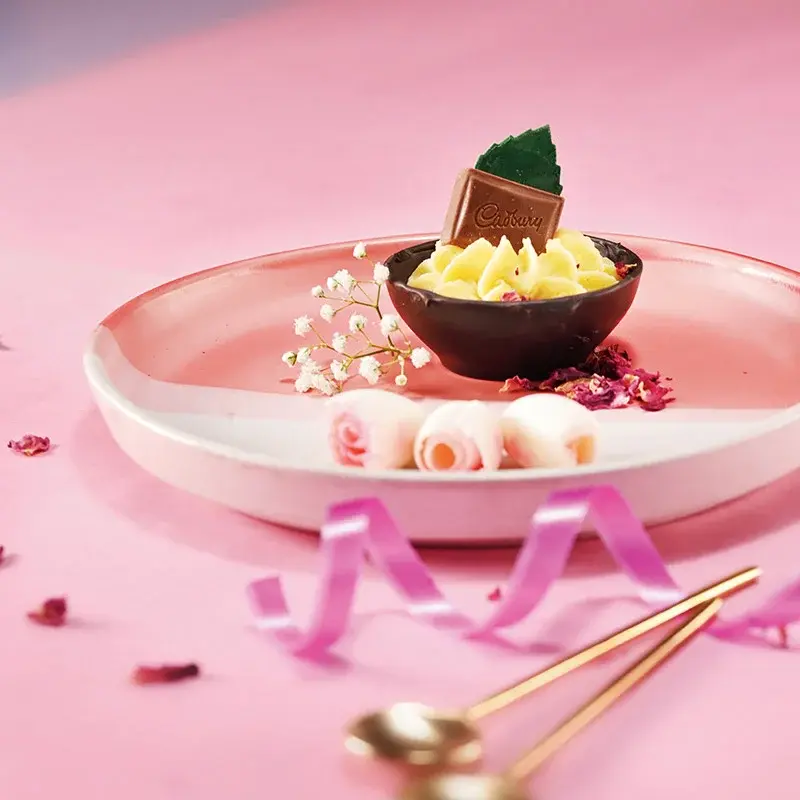Ghevar is a popular and traditional Rajasthani dessert. It is a beloved sweet that has been a part of Rajasthani culture for a long time. It comes in a lot of varieties and they all taste fantastic. So, whenever you find yourself in Rajasthan, give this lovely sweet a try. You won't be disappointed.

Ghevar is a popular and traditional Rajasthani dessert. It is a beloved sweet that has been a part of Rajasthani culture for a long time. It comes in a lot of varieties and they all taste fantastic. So, whenever you find yourself in Rajasthan, give this lovely sweet a try. You won't be disappointed.
Indian cuisine boasts a wide variety of desserts and sweets from different states across the country. From the irresistible gulab jamun to the winter special gajar ka halwa, the list is endless when it comes to desserts. Each state has its own specialties and those sweets are loved by people of all ages, from kids to adults. One such traditional dessert is the traditional Rajasthani dessert, ghevar. It is a popular sweet that has many varieties and they all taste fabulous. Ghevar is a perfect blend of flavor and texture and heaven for someone who has a sweet tooth. It is a must-try sweet whenever you find yourself in Rajasthan.
We'll go through the history of this delicious dessert and see how this sweet came into existence.
What Is Ghevar?

It is a traditional Rajasthani delicacy that is made with common ingredients. A batter of flour, ghee, and cold water is used to make this traditional Rajasthani sweet treat. The batter is then carefully placed into boiling hot oil or ghee to fry, creating a circular, disc-shaped dish with a beautiful pattern. Once the dish is perfectly deep-fried, it is either drenched in sugar syrup or covered in it. It is then usually topped with chopped nuts like pistachios or almonds, silver flakes, and thickened milk (rabri).
Known for its unique look, ghevar is sometimes called the "honeycomb dessert." It is typically flavored with cardamom powder and saffron, but it can also be made using malai (milk cream) or khoa (dry evaporated milk solids) in place of water.
Ghevar was once only enjoyed during the monsoon season, but it is now accessible all year long and is a popular festive treat made for holidays like Teej, Raksha Bandhan, Diwali, and Holi.
The History Of Ghevar

There are a few different origin legends attributed to Ghevar, however none of them can be verified by reliable sources. Ghevar's single origin has long been disputed by food historians, but their efforts have proven fruitless thus far. Some claim that the top craftsmen in the world for crafting Ghevar were and still are those from Sambar, Rajasthan. The proprietor of a 50-year-old candy store in Jaipur believes that Ghevar originated in the Pink City. Their forebears used to tell them tales of how cooks would get approached by strangers who wanted to learn the recipe for this type of dessert cake.
Known for its delicious flavor and honeycomb-like texture, this dessert is typically consumed throughout the holiday season. Ghevar is a staple on anyone's menu, especially during Teej and Gangaur, the Rajasthani married women's festivities. On the day before Gangaur, it is also the first gift that a newlywed bride chooses to give her as a Sinjara. The essence of these kinds of local festivities lies in the scent of freshly made, warm ghevar and mehendi-tinted hands. In addition to these, Makar Sankranti and Rakhshabandhan are two more occasions to enjoy ghevar.
Ghevar experienced a number of makeovers with different toppings over time. These days, every other candy company offers a unique variety of Ghevar. If you are unable to ingest sugar, there is an unsweetened version that is readily accessible in the market and has a long shelf life. If you are traveling with this kind of ghevar, there is no possibility of spills, moisture, or spoiling in high temperatures. You could simply prepare the sugar syrup at home and drizzle it over the golden halo to sweeten it later.
Variations Of Ghevar

Plain Ghevar:
The traditional ghevar is a delicious dish that needs no introduction. It has the classic honeycomb texture, is drenched in sweet syrup, and is frequently topped with chopped almonds, cardamom, and saffron.
Malai Ghevar:
This version is creamy and delicious. A thick coating of condensed milk mixture covers the ghevar, and a heaping portion of mawa (milk solids), saffron, and dry fruits are sprinkled on top.
Mava Ghevar:
Mava ghevar is topped with nuts and saffron strands and covered in a thick coating of khoya (milk solids). Its velvety feel is proof of luxury.
Kesar Ghevar:
Kesar Ghevar:
This ghevar has a lovely floral scent and is infused with saffron essence. Pistachios and almonds are used as decorations, and saffron syrup is liberally sprinkled over the dish.
Paneer Ghevar:
Ghevar with cottage cheese is also very popular. To make this, paneer is mixed into the mixture rather than placed on top of the prepared dish. It is then topped with dried fruits, primarily pistachios, and Varak. The Paneer Ghevar was invented in 1961 by Jaipur's famous sweet shop, Laxmi Mishtan Bhandar (LMB).
More Like This
Popular Articles



Trending Web Stories
Curated Recipes


















